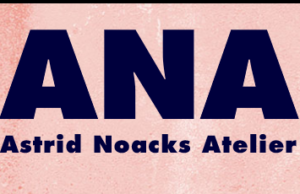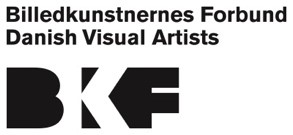Seminar: Institutional infrastructures
– new modes, collaborations and platforms for artistic production
How can art institutions best support artistic production and create cross-institutional collaboration between different disciplines and cultures? A joint seminar by the independent art institution Astrid Noack’s Atelier (DK) and the association of Danish visual artists, Billedkunstnernes Forbund, presents domestic and international examples of institutional best practices.
Today, contemporary art institutions are not only organizing exhibitions and offering the public a wide range of educational and social activities. Many art institutions are also building new platforms for collaboration, that support artistic research, artistic production and professional exchanges. These emerging, experimental infrastructures provide visual artists with better opportunities to experiment and work with their art; and are often developed in dialogue with local, national and international partners in as well as outside the confines of the international art scene.
This is the background for the seminar Institutional infrastructures – new modes, collaborations and platforms for artistic production, presented by the Copenhagen-based, independent art institution Astrid Noack’s Atelier (ANA) and the association of Danish visual artists, Billedkunstnernes Forbund (BKF).
The seminar will be held on Thursday, the 14th of November, 2019 from 1.00 pm to 5.00 pm at the Royal Danish Academy of Fine Arts in Copenhagen, Denmark. (See full program for the seminar below.)
With the seminar, Astrid Noack’s Atelier and Billedkunstnernes Forbund hope to inspire and connect artists, artworkers and other professionals in as well as outside the self-organized art scene. Read more about the speakers below.
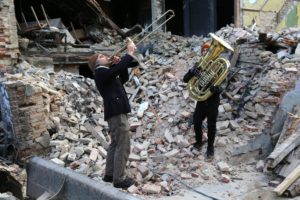
Photo: The place is alive. Performance series at Astrid Noacks Atelier, 2019.
Art between the construction cranes
Charlotte Præstegaard Schwartz will moderate the seminar, that will present a number of exciting examples of experimental institutional practices from Scandinavia, France and England. Together with visual artist Kirsten Dufour, she represents Astrid Noack’s Atelier, which currently faces a need to develop and rethink itself as an art institution:
The projectroom, which serves as both an exhibition facility, a residency for international artists and a local experimental art platform, is part of one of Copenhagen’s oldest backyard environments, where music studios, artist studios, workshops and small garages have so far co-existed side by side.
But last year the front building was demolished, and now the other houses in the backyards around the projectroom are being renovated and turned into expensive rental flats. This means that the area is undergoing significant changes – a development that will also affect the way, the art institution works and positions itself.
As a result of this development with construction cranes, builders and new housing construction, Astrid Noack’s Atelier, together with Billedkunstnernes Forbund, want to raise questions around new possibilities, challenges and responsibilities of art institutions. For how can innovative art institutions best support the work of artists – and, at the same time act as catalysts for the creation of alternative conceptions of the world?
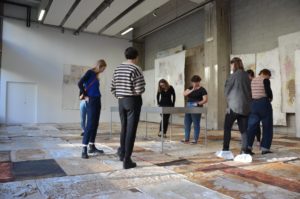
Photo: Bétonsalon – Centre for Art and Research, Paris.
French artistic partnerships
Keynote speaker at the seminar is Mélanie Bouteloup, director of the Bétonsalon – Centre for Art and Research in Paris.
She will talk about the Centre’s experiences in establishing new modes of collaboration between the arts and academia and about the Centre’s thriving creative partnerships with both public art museums and commercial partners.
Bétonsalon – Centre for Art and Research in Paris is a non-profit facility that combines collective studies of artistic and academic practices with exhibitions, performances, seminars, workshops and collaborative work with many different external partners, i.e. the University of Paris.
Bétonsalon also runs Villa Vassilieff in the heart of the Montparnasse district. This former artist’s studio is today an exhibition facility under the French Ministry of Culture and houses the Bétonsalon’s residency programme for artists and curators.
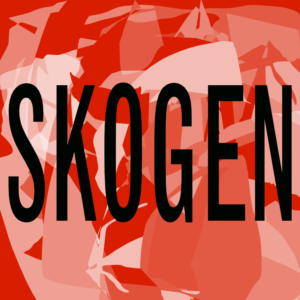 Swedish artist-run house
Swedish artist-run house
Accelerating amounts of temporary projects and a never-ending fast food consumption of ideas and products. How to organize your working life as an artist under these conditions?
This was the question, raised by a group of Swedish-based artists back in 2013, and their answer became SKOGEN, an artist-run house in Gothenburg, that presents new ways of coming together as artists and artworkers, sharing, examining and developing new modes of artistic processes together.
In SKOGEN, artists support and learn from each other, in study groups, residency programmes, seminars and collective presentations with artists from and outside of Sweden.
At the seminar in Copenhagen, Johan Forsman, one of the main forces behind the artist-run institution, will talk about the work being done at SKOGEN.
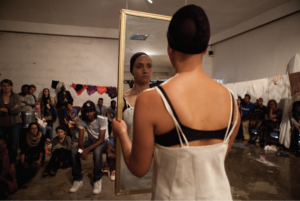
Photo: Carrying histories. Syowia Kyambi. Practice, Oslo, 2019.
Norwegian cross-institutional collaborations
Creating a focused, sustained dialogue between different disciplines and building new, interconnected communities in and outside of the art world is the ambition of the Norwegian art platform PRAKSIS, based in Oslo.
PRAKSIS is a nonprofit organisation that offers thematically focused residency programmes for Norwegian and international practitioners and thinkers in the creative fields.
It is not just about stimulating professional development among artists and other creatives, but also about opening up the artistic process and making it accessible to a wider audience: making people interested and engaged in what artists do, not just in what they produce.
At the seminar in Copenhagen, Nicholas John Jones, head of PRAKSIS, will talk about the organisation’s experience in creating exchanges and new collaborations across both national borders and professional fields. And share his views on which qualities all art spaces should prioritise to create more supportive environments for artists and public.
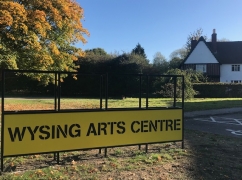 English experiences
English experiences
Can small and larger art institutions work together to give artists better opportunities? At the Wysing Arts Centre in Cambridge, they have good experience in doing just that. Here, Danish Lotte Juul Petersen has been working with cultural programmes for new art production and artists residencies for a decade.
Earlier this year, Lotte Juul Petersen was appointed new director of the Rønnebæksholm exhibition site in Næstved, Denmark. At the Copenhagen seminar, she talks about the English experiences and gives us her take on how they might be inspirational in a Danish context.
At the Wysing Arts Centre, Lotte Juul Petersen collaborated with i.e. TATE Modern and helped develop the national youth programme ‘Circuit’.

Photo: S-tog station Sydhavn Station houses the artist-run exhibition site of the same name.
Denmark: Young artists get a better start
The contemporary art scene needs all the innovative contributions that young artists provide. Therefore, it is crucial that newly graduated artists get the best possible start as they try to establish themselves as professional working artists after having finished their education.
The artist-run exhibition venue Sydhavn Station has recently committed itself to giving young artists better working conditions.
In collaboration with Billedkunstnernes Forbund, Sydhavn Station launched the St Residens residency programme earlier this year. The residency gives two newly graduated artists one year’s free studio stay, guidance by experienced colleagues, and a solo exhibition at the end of the programme. The programme stems from a desire to contribute to a more dynamic art scene in Denmark by creating alternative spaces for visual artists’ work.
At the seminar, visual artists Sonja Lillebæk Christensen and current resident Aske Thiberg from Sydhavn Station will share thoughts and experiences from St Residens.
SEMINAR PROGRAMME:
Institutional infrastructures
– new modes, collaborations and platforms for artistic production
A seminar arranged by Astrid Noack’s Atelier (ANA) and Billedkunstnernes Forbund (BKF)
Time and place:
Thursday the 14th of November 2019 at 1.00 pm to 5.00 pm
Media Auditorium, The Royal Danish Academy of Fine Arts, Schools of Visual Arts
Kgs. Nytorv 1, 1050 KBH K.
The seminar is in English. Participation is free, but registration is required no later than the 10th of November at: kmfp@bkf.dk
Moderator: Charlotte Præstegaard Schwartz, Astrid Noack’s Atelier
1.00 pm Welcome by Astrid Noack’s Atelier and Billedkunstnernes Forbund
1.15 pm Mélanie Bouteloup: About Bétonsalon – Centre for Art and Research, Paris
1.55 pm Johan Forsman: About SKOGEN, Gothenburg
2.20 pm Lotte Juul Petersen: About Wysing Art Centre, Cambridge
2.45 pm Performance and presentation by visual artist Lise Skou: Service Act Manifest Series 2.
Coffee and refreshments are served in connection with the performance
3.20 pm Nicholas John Jones: About PRAKSIS, Oslo
3.45 pm Sonja Lillebæk Christensen and Aske Thiberg: About St Residens, Copenhagen
4.00 pm Panel debate and dialogue with audience
5.00 pm End of seminar
Photo at top: Performance by visual artist Lise Skou, Astrid Noack’s Atelier 2019: Service Act Manifest Series Section 1: Rubbing and Scrubbing – the appearance of the individual as the body of capitalism. Photo: Astrid Noack’s Atelier.
Supported by The Danish Arts Council.
